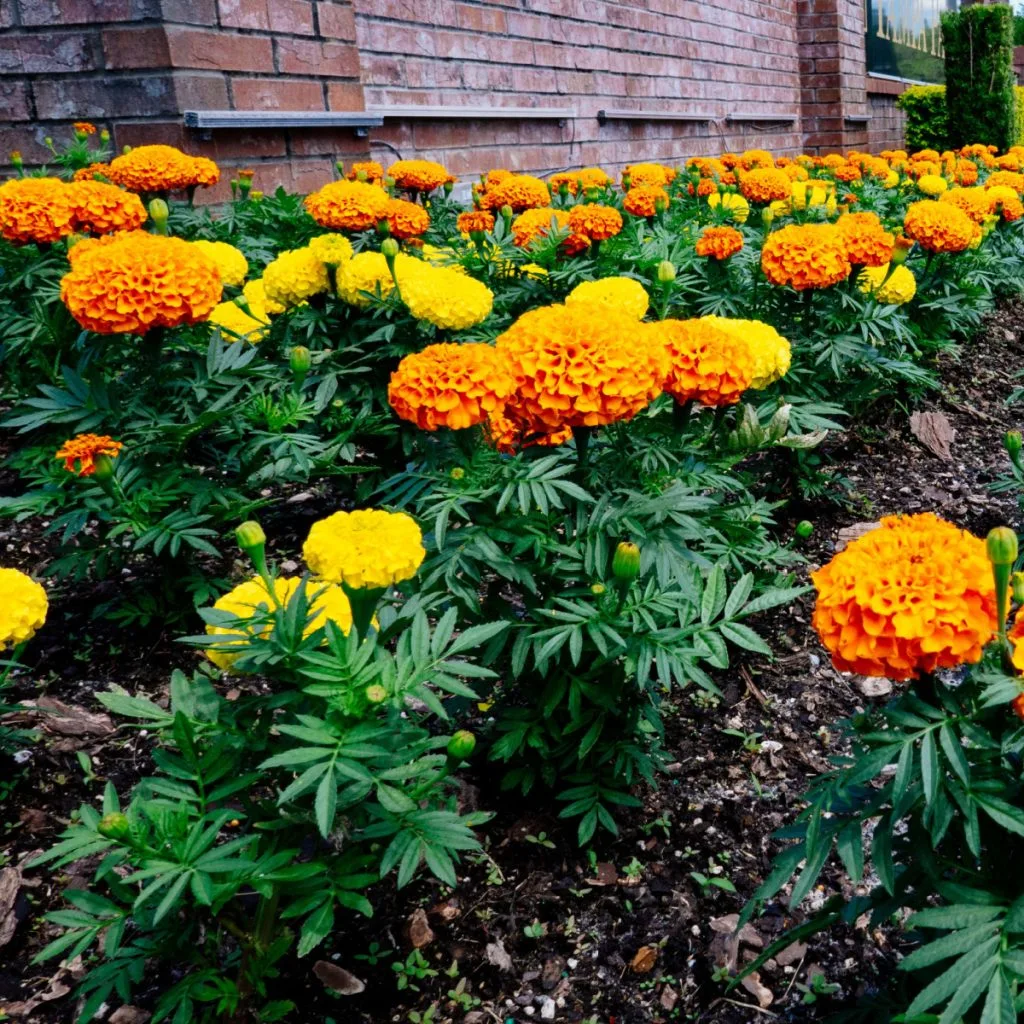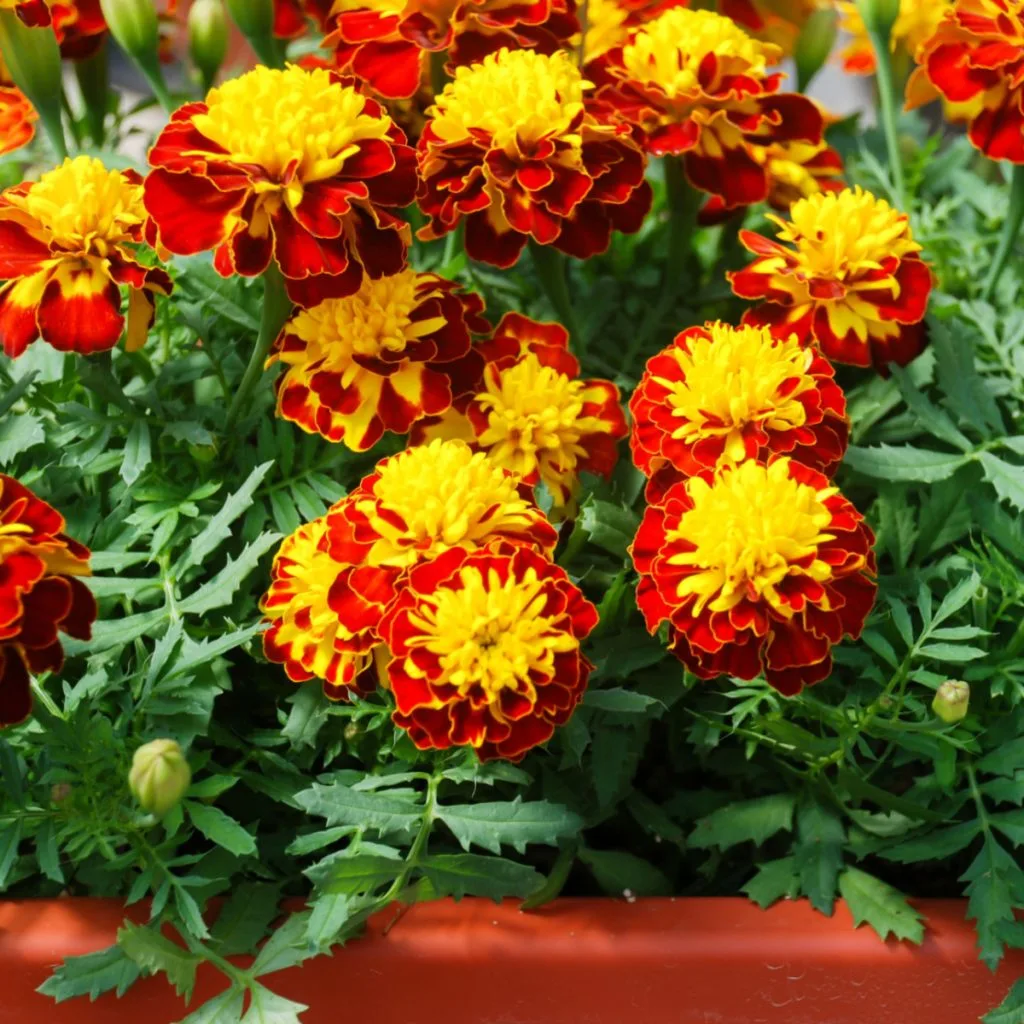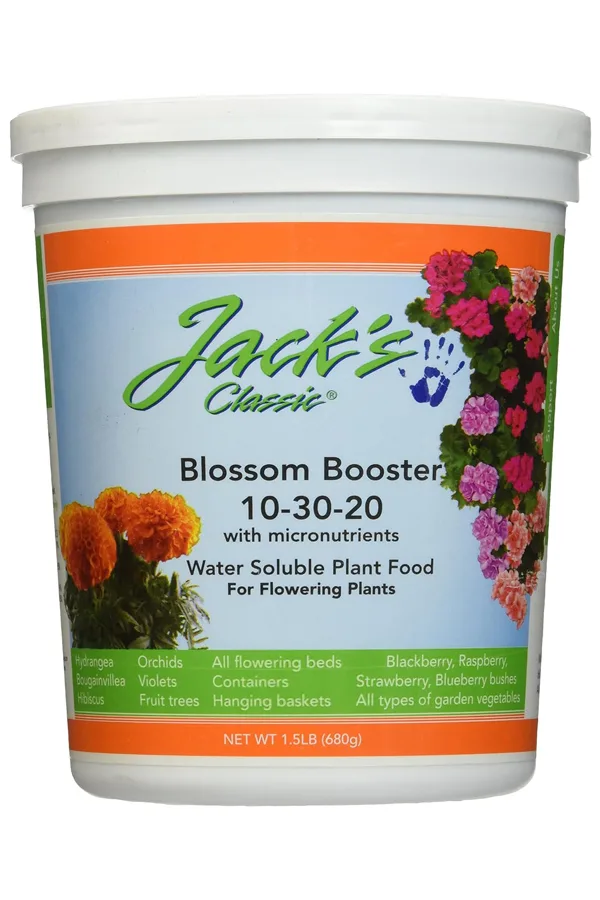Did you know with just three simple tips – you can keep your marigolds blooming big all summer long with ease – and even late into fall?
Marigolds are one of the most prolific blooming annuals of all. But all of that flower power does more than just add a big pop of color. The bright blooms of marigolds are also great for attracting key pollinators like honeybees and butterflies to your plants.
Even better, their strong scent also deters a long list of garden plant enemies. That list includes hornworms, aphids, whiteflies and best of all – mosquitoes! But one thing is for sure, to get the most beauty and protection from marigolds, the more you can get them to bloom – the better!

Three Big Keys To Keep Marigolds Blooming All Summer
When it comes to keeping your marigolds healthy, strong and blooming big, success all boils down to taking care of three critical elements for your plants. The first is giving them the nutrients and energy to keep buds and blooms coming on. The second is removing their old bloom as they die off to make way for the new. And last but not least – giving them just the right amount of water!
If all three of these needs are met on a consistent basis, you can all but ensure big flowering success. With that in mind, here is a look at each specific element, and how to make sure your plants get exactly what they need to flower bigger than ever – all summer long!
Fertilizing Marigolds To Keep Them Blooming
Marigolds use a lot of energy to maintain their foliage and flowers. Even the richest of flowerbed, garden or potting soil will eventually run out those nutrients over the course of the summer. And that is exactly where fertilizing can pick up the slack.
Fertilizing is just as important as proper watering in giving your plants the nutrients they need to continue blooming. And once again, just as with watering, the key to success is consistency!
Giving any annual flower too many nutrients all at once can actually harm their blooming cycles more than help. When plants receive too much energy, instead of producing new blooms, they simply work to grow bigger. And, of course, without enough, they will stop or slow blooming as well!

How To Fertilize Marigold
For marigolds, whether they are growing in containers or directly in the soil, it is best to give them a lower but steady dose of nutrients every seven to ten days.
As for what type of fertilizer to use, liquid fertilizers are best. Not only do they deliver nutrients to the roots of a plant, but they also absorb into the foliage as well. This double dose of energy can really power up plants and help to produce new blooms quickly.
Select a water-soluble fertilizer that has a higher middle number in its Nitrogen, Phosphorous and Potassium (N-P-K) makeup. Phosphorous is the key nutrient for powering blooms. This will help the plant concentrate more on flowering than on simply growing bigger. Affiliate Product Link: Jacks Classic No.4 10-30-20 Blossom Booster Fertilizer
When feeding every ten to fourteen days, mix your fertilizer of choice at half strength. This will allow you to power the plants more often to maintain consistent energy, without having to worry about giving your marigolds too much energy all at once.

Deadheading Old Blooms
Just as important as feeding your plants is deadheading your old marigold blooms. In fact, it’s a must to keep blooms coming on! See: How To Deadhead Marigolds – And Get Them To Bloom Even Bigger!
Fading flowers continue to take valuable nutrients from your marigolds if left on the plant. But by removing these spent blooms, you can allow the plant to direct all of its energy and resources back to producing new blooms. And deadheading marigolds couldn’t be easier!
To remove old blooms, simply pinch off the bloom below at the stem. You can also use small scissors or pruning snips if desired. Usually, with marigold blooms, the flowers will pop off with ease. One thing is for sure, you will more than notice that a few days after deadheading, your plants will already be sending up a lot more blooms!
For best results and to keep plants flowering, try to deadhead your marigolds at least once a week all throughout the season. And remember, save a few of those stem heads and allow them to dry out – you will be rewarded with tons of free seeds to plant next year!

Giving Marigolds The Water They Need
Marigolds are an extremely durable plant. They handle full sun and heat well. And, they also happen to be one of the most drought tolerant of all summer flowering annuals. But to really get them to bloom big and keep them blooming, they need a consistent source of water.
Water is key not just for keeping roots and foliage healthy, but for powering new bloom sets. When marigolds are properly hydrated, they can more quickly soak in and distribute the nutrients they require for flowering.
So how much water is enough to keep marigolds blooming big? For marigolds, it truly is about consistency. Marigolds growing directly in flowerbeds or garden soil should be getting one to one and a half inches of water per week. That amounts to about one-half to three-quarters of a gallon of water per plant.
Watering Marigolds In Pots
For marigolds growing in containers, daily watering is usually required. It is always best to water early in the morning. This not only allows the plants to be ready to handle the heat of the day, but also helps them maximize the sunlight for more blooming power.
As important as consistent water is, be careful not to overwater. Overwatering can swell roots and make them unable to take in nutrients. Check down into the soil a few inches and if good moisture is present, skip watering for the day.
For pots and containers, moisture meters are great for this. They allow you to quickly stick the probe in down deep to see the moisture level where the roots are. For those that struggle with knowing when or when not to water – moisture meters can be a lifesaver! Product Affiliate Link : Moisture Meter Instant Read Probe
By simply taking care of 3 vital tasks – you can keep your marigolds blooming bright and beautiful with ease!
Simple Garden Life
Follow Our Facebook Page For Even More Great Tips! Simple Garden Life Facebook Page
Simple Garden Life is a website dedicated to keeping gardening fun, simple and enjoyable! We publish two new articles each week along with a new garden podcast episode every two weeks. This article may contain affiliate links.
